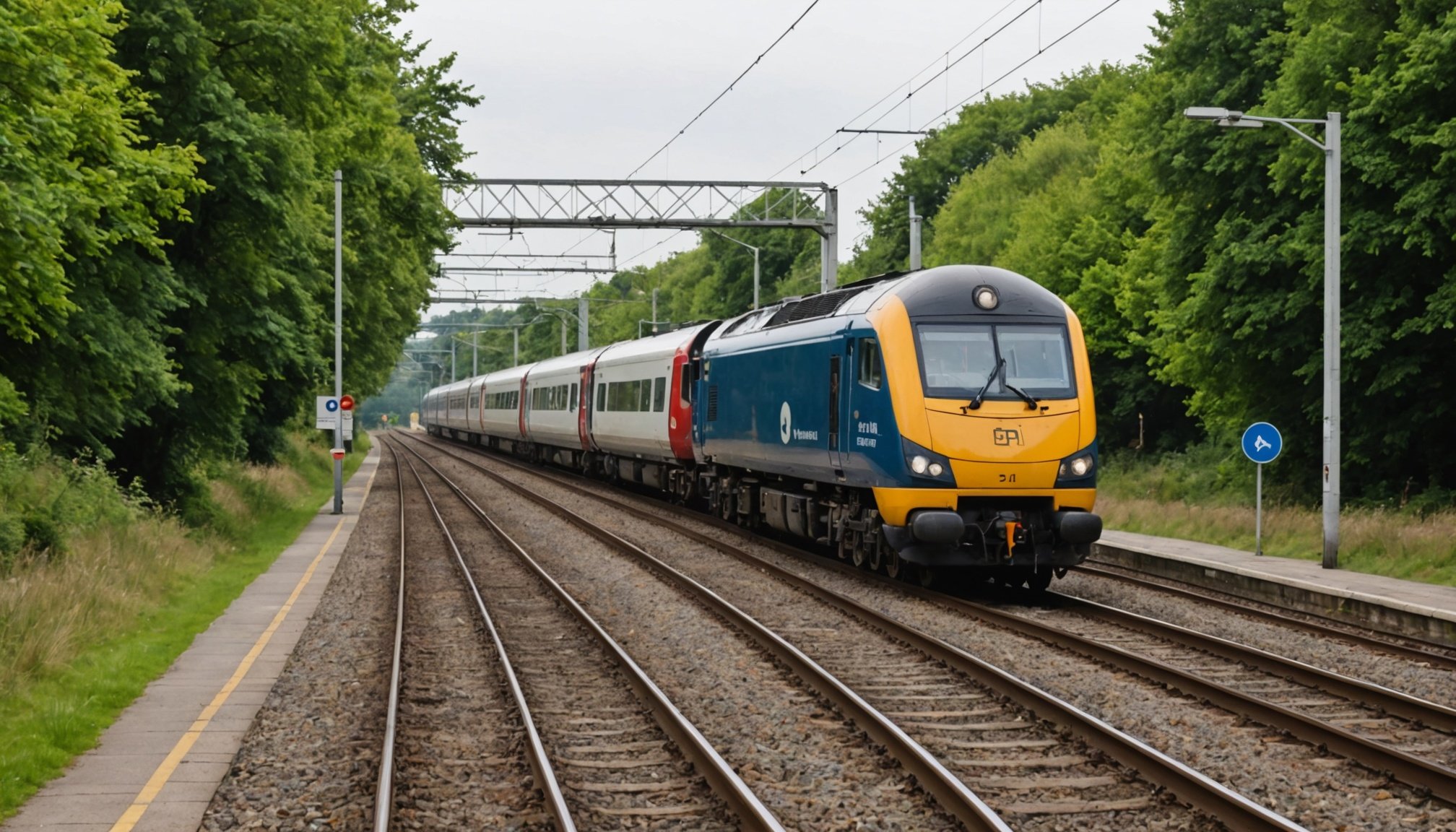Overview of UK Rail Network Expansions
The UK rail network has undergone considerable transformation over the years, becoming a vital part of the nation’s infrastructure. The history of rail expansions in the UK traces back to the 19th century, a period marked by the rapid development of railway lines that connected major cities and industrial centres. These expansions played a significant role in the urban and economic landscape of the UK, laying the groundwork for future growth.
Currently, the UK is investing heavily in expansions aimed at modernising and increasing the capacity of its rail network. Notable projects include the High Speed 2 (HS2) aimed at improving connections between London, Birmingham, Manchester, and Leeds, with completion timelines extending into the late 2030s. Another significant project is the Crossrail, also known as the Elizabeth Line, which will enhance east–west travel across London.
Have you seen this : Unlocking Sustainable Success: Strategies for UK Property Developers to Leverage Green Financing Solutions
The economic impact of these expansions is substantial. They promise to enhance urban development by boosting connectivity, reducing travel times, and supporting economic activities. The rail network acts as a backbone for public transport, facilitating efficient movement of people and goods, thus triggering growth in various regions. Expansions of this nature are designed to support sustainable urban development and accommodate the increasing demand for reliable transport.
Economic Impact of Rail Expansions on Property Values
The interpretation of economic impact related to rail expansions is significant, particularly when examining property values. Historically, the trend indicates that real estate prices often rise following the introduction of new rail lines. When assessing property value changes, a comprehensive analysis of various regions provides insight into these shifts.
Additional reading : Unlocking Higher Rental Profits: A Guide to Short-Term Letting Success for UK Property Owners
Historical Trends
Examining historical property value trends, one can see a positive correlation between rail expansions and increases in property values. This trend is evident as improved rail connectivity tends to enhance accessibility and convenience, appealing to potential buyers and investors.
Case Studies
Case studies provide practical illustrations of this phenomenon. For instance, certain districts have experienced a notable surge in property values following recent rail developments. These real-life examples underscore the transformative economic role of rail expansions in elevating property values in adjacent areas.
Compared Areas
Comparatively, areas without such expansions often lag in market appreciation. A stark contrast exists when evaluating localities benefited by rail extensions against those without. The difference in property values underscores the tangible economic advantage tied to rail expansions.
Through these lenses—historical trends and specific case studies—it becomes evident that rail developments substantially influence property values, fostering optimism for investors in expanding urban landscapes.
Factors Influencing Property Value Changes
A variety of property value factors can significantly influence the market price of real estate. One notable factor is the rail proximity; however, its impact is complex. Properties nearer to rail stations often enjoy increased valuations due to enhanced connectivity and convenience, making them highly desirable in bustling urban areas. However, noise and increased foot traffic can sometimes deter buyers, potentially hampering values. It’s a delicate balance that hinges on local conditions and market dynamics.
Next, the influence of local amenities plays an equally vital role. Properties in proximity to good schools, parks, and shopping areas tend to appreciate due to the convenience and lifestyle they offer to homeowners. Locations with robust employment opportunities often see a surge in property demand, as people prefer living near their workplace to reduce commuting time.
Market dynamics and investor perceptions also sway property values. Trends such as economic growth, interest rates, and demographic shifts can cause fluctuations. Investor perceptions, too, can affect market stability—potential buyers may hesitate in volatile markets, influencing both demand and property values. Understanding these factors helps in making informed real estate decisions, balancing proximity perks against market volatility.
Benefits of Rail Expansion on Local Communities
Rail expansion significantly enhances transportation access for residents, offering a reliable alternative to congested roads. Improved access not only facilitates smoother commutes but also connects local communities to broader opportunities in education and employment. When a rail line extends its reach, it often leads to the revitalisation of nearby areas.
One of the standout benefits is the boost in local business and economic activities. The proximity to a rail system can attract new businesses, supporting urban growth. Entrepreneurs and investors are more likely to consider areas with a comprehensive transportation network, anticipating a rise in foot traffic.
The long-term effects on urban growth and development are equally significant. Rail expansions often stimulate sustainable urbanisation, encouraging the development of housing and commercial spaces that benefit from well-connected infrastructure. Cities that invest in rail systems tend to see a balanced spread of economic growth, reducing the strain on already-busy city centres.
Lastly, communities that enjoy improved transportation access through rail expansion report a heightened quality of life. Residents experience less travel-related stress, fostering healthier and more connected urban environments. As such, rail line improvements play a crucial role in shaping vibrant and robust local communities.
Potential Drawbacks of Rail Expansions
When considering rail expansions, it’s essential to acknowledge potential drawbacks. Primary among these concerns is the possibility of increased noise and congestion. As rail services grow, noise levels can rise, affecting nearby residents.
Community concerns often center around the risk of gentrification, as rail expansions can lead to shifts in local housing affordability. Proximity to enhanced transportation may increase property values, making it hard for existing residents to stay. This can lead to a more gentrified area, displacing lower-income households.
Environmental impacts are another key issue. New transportation projects like rail expansions can disrupt local ecosystems. Construction might lead to the loss of habitats, affecting biodiversity. Additionally, increased rail traffic could contribute to air pollution if not managed properly.
Mitigating these potential drawbacks requires thoughtful planning and involving the communities affected. For example, strategies such as sound barriers can help manage noise concerns, while policies to protect affordable housing can counteract gentrification effects. Addressing environmental impacts might involve designing construction methods that are sensitive to local flora and fauna. Collaborating with ecological experts can further ensure that rail projects progress sustainably, balancing development with nature preservation.
Actionable Insights for Property Investors
Navigating the complex world of property investment requires strategic foresight, especially when considering properties near rail expansions. The key to successful investment lies in understanding how rail projects can reshape local property markets.
Investment strategies should begin with a thorough market analysis. This means evaluating economic indicators, demographic shifts, and upcoming infrastructure developments. Prospective investors should focus on areas where rail expansions are likely to boost property values by improving accessibility and fostering economic growth. A clear grasp of these factors can reveal whether a location presents a viable opportunity for investment.
Monitoring rail projects requires an awareness of current market insights. Investors should stay updated on local government plans and project timelines. This information helps in anticipating changes and planning appropriately timed investments. By leveraging tools like online databases and municipal reports, investors can gather essential data on project scope and scheduled completion dates.
Recommendations for investors include developing a comprehensive checklist to evaluate the property potential concerning proximity to rail expansions and consulting with local city planners for the latest updates. Remaining informed about ongoing rail projects and trends will empower investors to make knowledgeable and profitable decisions, turning potential risks into calculated rewards.
Conclusion and Future Considerations
As we look towards future trends in rail network expansions, various predictions highlight significant implications for local communities and economies. The development of a more extensive rail network is poised to enhance connectivity, promoting economic growth and accessibility. This trend is expected to have a profound effect on the property market, potentially increasing the value of properties located near new rail lines. Such developments offer promising opportunities for residents and investors alike, necessitating a keen awareness of ongoing changes.
For the property market, these transport developments could lead to evolving dynamics. Areas previously considered less attractive might see a surge in interest, as improved transport links make them more accessible. This shift can lead to a ripple effect, where even properties once overlooked become hotspots for new developments and living purposes.
It’s crucial for both residents and investors to stay informed about rail network advancements. By understanding how these changes may impact areas of interest, they can make well-informed decisions regarding their investments and living choices. Being proactive in this respect ensures the ability to capitalise on emerging trends and opportunities, setting the stage for beneficial outcomes amidst these transformative shifts.











